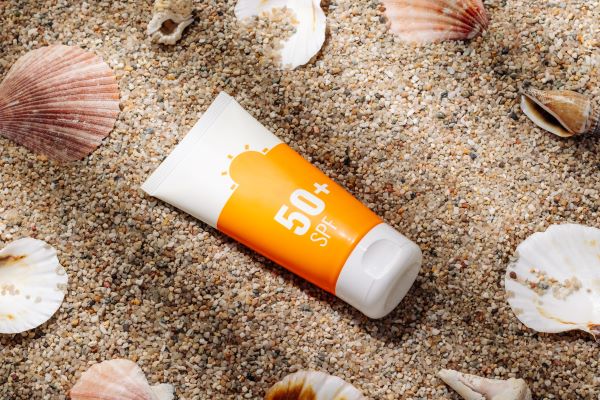Allergies, at their worst, can be life-threatening. Anaphylaxis is a severe allergic reaction that can have various symptoms, including feeling lightheaded or dizzy, having trouble breathing, or being unable to swallow. Although anaphylaxis is often triggered by food allergies, it can also be caused by insect bites or reactions to medication. The best way to treat anaphylaxis is with an injection of Epinephrine (adrenaline). It’s important for people who are at risk of having anaphylaxis to know what triggers it and how to react quickly in case they experience symptoms. This blog post will help you learn the basics of what the condition is, its symptoms and causes, and how to provide treatment.
What is Anaphylaxis?
Anaphylaxis is a condition in which the body’s immune system senses something that appears foreign and very dangerous within the body. This is usually something that a person is allergic to, such as Peanuts, insect bites or medicines. A person’s range of severity for an anaphylaxis reaction can vary. But generally, anaphylaxis is very severe and life-threatening. This is because your immune system overreacts to a trigger (a trigger is what causes the reaction). It overreacts by releasing a lot of chemicals all at once, which can cause your body to go into shock. This is known as an anaphylactic shock. It causes a person’s blood pressure to drop suddenly and your airways narrow, blocking breathing and more. It can generally be treated using an EpiPen and a trip to the emergency department.
What Causes Anaphylaxis?
There are well-known risk factors for anaphylaxis and it is important to understand what might increase your risk and severity of anaphylaxis. Some things that might increase your risk include:
Previous anaphylaxis
If you’ve had anaphylaxis once, your risk of having a reaction again increases. Future reactions might be more severe than the first reaction.
Allergies or asthma
People who have either condition are at increased risk of having anaphylaxis.
Certain other conditions
These include heart disease and an abnormal accumulation of a particular type of white blood cell (mastocytosis).
Suppose you’ve had anaphylaxis previously. Knowing what allergies triggered your reaction is essential.
Usual triggers
Food is the most common trigger. According to Allergy Facts Australia, these foods cause up to 90% of anaphylaxis reactions. Peanuts, eggs, tree nuts, fish, shellfish, sesame, wheat and soy are the most common triggers of anaphylaxis. Even very small amounts of foods that cause allergic reactions can be life-threatening. In extreme cases, people can even react to the smell of the food being cooked, or even having intimate contact with someone who has eaten the food.
Bites and stings from a range of insects such as wasps, various ants, wasps and ticks are common causes for insect-related anaphylaxis. The chemical released by the insect into the body can cause the immune system to overreact in order to ‘protect’ the body. Since the toxins injected by insects differ from insect to insect, you might be triggered by only one type or many different insects.
Medications can cause life-threatening reactions from both prescribed and over the counter medicine. Individuals can also have these reactions to herbal or ‘alternative’ medicines too.
Other triggers such as latex or exercise-induced anaphylaxis are less common.
Symptoms of anaphylaxis
Anaphylaxis symptoms can occur within minutes of exposure to an allergen. Sometimes, however, it can take 30 minutes or longer after exposure. ASCIA gives us a great example of what the signs and symptoms can include:
- Difficult or noisy breathing
- Swelling of the tongue
- Swelling or tightness in the throat
- Difficulty talking or hoarse voice
- Wheeze or persistent cough
- Persistent dizziness or collapse
- Pale skin and floppy posture (in young children)
Treatment for anaphylaxis
EpiPen Adrenaline (epinephrine) autoinjectors are the best treatment for anaphylaxis. There are also other brands of Adrenaline autoinjectors too. However, the EpiPen is the most common.
What does it do?
An Adrenaline (epinephrine) autoinjector injects the drug Epinephrine which is the drug name for adrenaline. Injecting adrenaline into the body increases heart rate, blood sugar levels, and how hard the heartbeats. This helps by constricting blood vessels, increasing blood pressure and decreasing swelling. Allowing muscles around the airways to relax and making it easier to breathe as the lungs can get more oxygen. It also stops the release of more chemicals, stopping the progression of an anaphylaxis reaction.
How do you use an EpiPen?
An EpiPen needs to be injected into a person for it to be used in an emergency situation. Here is how to use an EpiPen which can also be found on the Anaphylaxis action plan provided by ASCIA.
- Form fist around EpiPen and pull off the blue safety release
- Hold the leg still and place orange end against the outer mid-thigh (with or without clothing)
- Push down hard until a click is heard or felt and hold in place for 3 seconds. After this remove the EpiPen.
Ensure you have the right EpiPen as adults over 20kg and children less than 20kg have different doses in the EpiPen.
@firstaidproau How to use an EpiPen! Like and share to possible save a life! 🙏🏽 ##fyp ##emergency ##epipen ##save ##life ##firstaid ##howto ##safetytips ##tiktoktaught
♬ Sunny Day - Ted Fresco
What is an anaphylaxis action plan?
An action plan is an excellent way of staying safe and alive! An action plan goes into the details and signs of different levels of reactions. It explores different mild to moderate symptoms, hat to do during the symptoms and what is causing these reactions. It is important to have an action plan for yourself or if you are taking care of anyone who has anaphylaxis.
Before doing an action plan it is important to understand what triggers your reaction. This can help you and your doctor go through what you need to do to avoid these triggers as well as including it on your action plan. The person reading the plan knows what triggered your anaphylaxis and gets you out of harm’s way.
Action for Anaphylaxis
The action plan also covers what should be done in case of an emergency. SA Health recommends that when someone has an anaphylactic reaction, you should:
If in doubt give an adrenaline autoinjector first, if someone has severe and sudden breathing troubles (including wheeze, cough or hoarse voice), even if there are no skin symptoms. Then seek medical help as soon as possible!
- Commence CPR at any time if the person is not breathing normally or is unresponsive.
- If the person has asthma, give an EpiPen injection first! Then use the puffer.
- Lay the person flat. Do not allow them to stand or walk.
If unconscious, place in a recovery position. If breathing is difficult, allow them to sit with legs outstretched. Hold young children flat, not upright. - Give adrenaline autoinjector
- Dial triple zero (000) and say ‘ambulance.’
- Phone family or emergency contact
- If there is no response after 5 minutes further adrenaline doses may be given
- Transfer person to hospital for at least 4 hours of observation.
What does an action plan look like?
Here is an example of the action plan for anaphylaxis . If you have ever had an anaphylaxis reaction it is important to talk to your GP about getting an anaphylaxis action plan as soon as possible.

How can a first aid course help?
A first aid course is a great way to help out the community and those you love. If you know anyone or you yourself have anaphylaxis it can be a great way to learn how to provide first aid in a life saving situation. Our HTAID011 Provide First Aid training course is a great course to do and it can be life saving! It teaches you how to use an EpiPen and other life saving techniques such as CPR. It is inexpensive and you can book it within a day’s notice. So why not book today!







